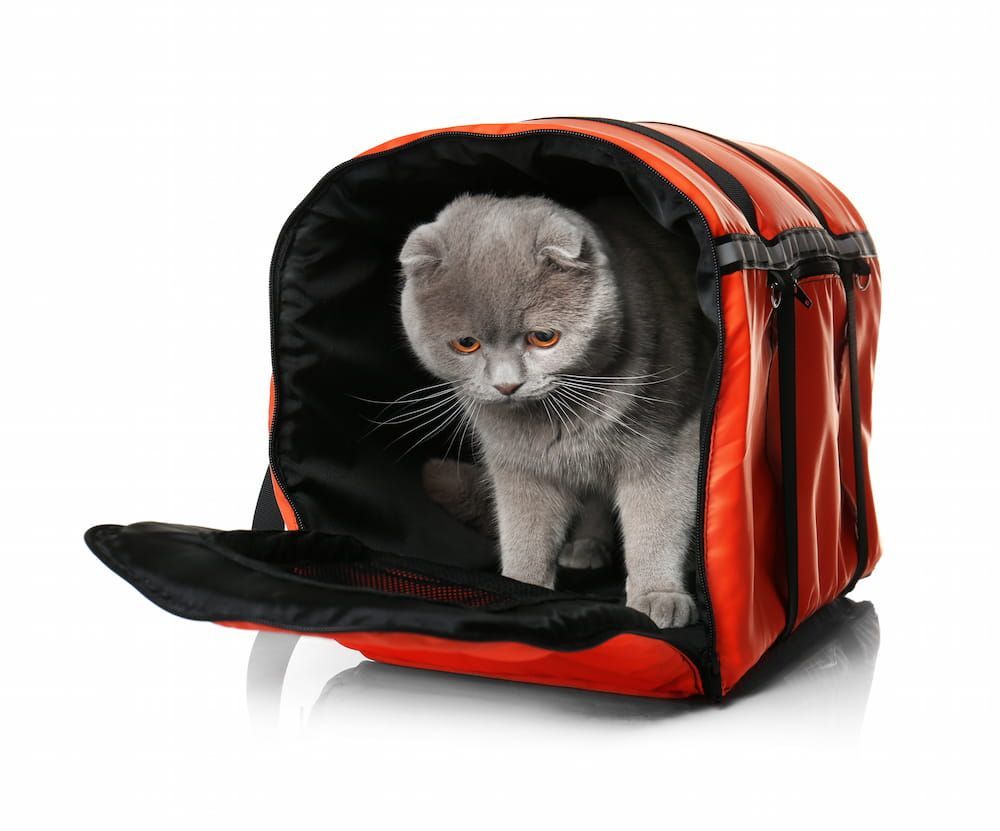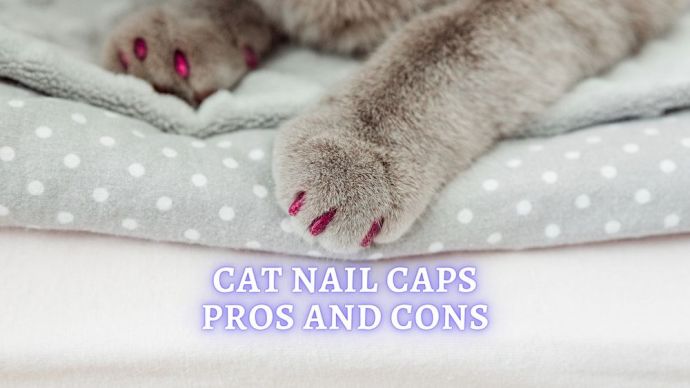How to Get an Aggressive Cat Into a Carrier? 6 Methods to Get a Cat Into a Carrier
Written by:
Author: Carol Young
Carol has worked in specialty, emergency, mixed animal and general veterinary practices, and enjoys all aspects of veterinary medicine. Her special areas of interest include anesthesia, critical care, emergency, dentistry, internal medicine and small animal nutrition.
View all 62 articlesLearn about our editorial process and veterinary review board.
Viewed: 1088
Updated on: 01/05/2022
As cat owners, all of us have times when it’s been quite a challenge, even a battle, to get your kitty into a carrier. This is especially true if your cat is not particularly fond of being placed in a carrier. A trip to the veterinarian can turn into an outright ordeal, and all those involved may end up getting scratched, bitten, or even sent to the emergency room. If you have a fur baby who turns into a wildcat at the sight of a carrier, there are some things you can do to get an aggressive cat into it.
How to Choose a Right Carrier?
The first step in getting an aggressive or a feral cat into a carrier is to select the correct type and size. Many different cat carriers, from soft backpacks, hard plastic carriers, and even rolling suitcase ones. The important thing to note when shopping for a carrier is to ensure that it is fully enclosed, as well as big and sturdy enough to transport your cat safely back and forth.
In choosing a suitable carrier, make sure that it is big enough for your cat and that she can comfortably turn around while inside. It is also critical that it is properly ventilated so that your cat will not be in danger of overheating or lacking airflow while inside.
READ MORE: Best Cat Carriers
Train Your Cat to Like the Carrier First
The carrier means a trip to the veterinarian’s office for most cats, which means being prodded and probably poked in a strange environment. In training your pet to like the carrier, try to get her used to it by placing it in a comfortable and quiet place in your house or apartment. Placing a towel or comfy bed in the carrier while leaving the door open can make for an enticing napping spot. You can also tempt your kitty to spend time in it by placing treats inside or using a calming pheromone spray such as Feliway. The point is to make the carrier a safe haven to decrease your cat’s stress during a trip in the car or to the veterinarian.
READ MORE: Best Cat Backpacks
Methods to Get a Cat into a Carrier
There are several ways to get an angry kitty into a carrier without creating more stress and anxiety in your feline friend. These strategies include the following:
1. Towel/Blanket or “Purrito” Method
With the kitty “purrito” method, the goal is to restrain the cat’s limbs and prevent them from grabbing hold of the outside of the carrier with their claws. This works especially well for aggressive cats and feral cats. Also, wrapping your kitty up in a comfy towel can help to soothe and relax her. Here’s how to wrap up your feline friend using the “purrito” method:
- Lay a towel down on a flat surface next to the carrier. Make sure that the door is open.
- Get your cat. This can be tricky as the sight of the carrier may alarm her. Try coaxing her with treats or food.
- Place your cat on a towel or small blanket, and slowly wrap the towel around her body. Tuck the bottom of the towel or blanket around her legs, leaving her head exposed.
- Slowly place your “purrito” cat including towel/blanket into her carrier. Once you close the door, kitty should be able to move about freely, or she may just be content to cuddle inside of the towel. Be sure to close the door or the carrier and make sure that they are secure inside.
2. Treats
If your cat loves treats, try using her motivation for snacks to get them inside the carrier. Try the following:
- Place the carrier near your cat, but do it slowly and quietly so as not to startle her.
- Open the door.
- Place some treats outside and inside of the carrier.
- Be patient. It might take several days for your cat to get used to the carrier, and learn that nothing will happen to her if she climbs into the carrier to get the treats.
- Try this over a few days or weeks to get her used to being enclosed in the carrier.
3. Pillowcase
Another tactic you can try is using a pillowcase. Like the “purrito” method, a pillowcase can offer some comfort, as well as make things easier for you to get your cat in and out of a carrier. To use the pillowcase method, try the following:
- Approach your cat calmly and slowly with a pillowcase.
- Place some treats around and inside the pillowcase. Lots of cats like to burrow underneath sheets and blankets, and yours just might enjoy burrowing into a pillowcase to get comfy and to snag some treats.
- After your cat has willingly climbed into a pillowcase (or after you have placed them into a pillowcase), pick up your pet gently in the pillowcase and transfer her to the carrier. You can either cover her head or leave her head exposed in the pillowcase, just make sure she can breathe of course.
- If you are on your way to the veterinarian, using the pillowcase method will also make it easier for the veterinarian to get your cat out of the carrier.
4. Pheromones
The use of pheromones can also help get an angry cat into a carrier. Pheromones are a type of chemical communication that cats use to interact with each other as well as the world around them. All felines produce a wide range of pheromones, and each kind can produce feelings of stress, happiness, social bonding, and identifying other cats. The idea behind pheromone products such as Feliway is to produce soothing and relaxing scents that help to calm down your kitty. Pheromones can also be used to reduce stress-induced behavior in cats, and pheromone products mimic the natural pheromones that send calming messages. These can help to reduce stress-related behaviors such as hiding, scratching, spraying, and the stress related to being placed in a cat carrier.
If you want to try a pheromone product, they typically come in the form of sprays and dispensers. Sprays may work better when used with a cat carrier.
Here’s how to use pheromones:
- Place the carrier in a quiet, small room, and spray the inside a few times with the pheromone product.
- Spray some of the product on a towel.
- Get your cat and gently rub the towel around her.
- If your kitty responds and starts to calm down, then gently pick her up and place her into the carrier.
- Make sure that the carrier door is closed securely.
RELATED: How to sedate a cat naturally? (Vet Advice)
5. Toys
If your cat loves toys, then playthings can be an easy way to entice her into a carrier. Try placing her favorite toys inside it, and allow them to explore and play with the toys inside the carrier for a few days before you transport her. This way, your kitty will associate the carrier with playtime, and it will be less stressful for them.
RELATED: Best Cat Toys
6. Catnip
Most cats adore catnip. It targets the “happy” receptors in the brain, and when eaten, can sometimes make your pet hyper. Some react to catnip by rolling, rubbing, and flipping, but they usually end up calming down after a while. If you want to try catnip, try using a toy or a sachet stuffed with catnip, and place it inside the carrier. Give your feline friend plenty of time to explore and investigate. It may take a few days for your cat to enter the carrier to get the catnip toy. The important thing is to be patient and let your pet take her time. It’s essential to make this as stress-free as possible.
How to Get an Injured Cat Into a Carrier?
If you have been faced with the unfortunate fact of having to get an injured cat to the veterinarian, you mustn’t cause any additional injury. If a pet has a broken limb, or a soft-tissue injury, be sure to determine where the injury is first so as not to cause additional injury. Also, make sure that you use a towel or a blanket to pick up your cat, and always go slowly and carefully so as not to injure them, and not get bitten. An injured animal is painful, so always be aware that painful animals will bite if handled. Using a thick towel and slow, careful movements will help. If you are unsure of the technique to use in transporting a hurt cat, consult your veterinarian.
How to Prepare a Carrier?
Cats are naturally creatures of habit, and they typically don’t like change. As a result, it may take your pet a while to get used to new things, such as a carrier. To prepare for transportation, place the carrier in a quiet room accessible to your pet, and place some comfy towels, treats, and toys inside. Give her time to explore and investigate the carrier, and learn that it is nothing to be afraid of.
FAQ
How do you get an unwilling cat into a carrier?
As mentioned above, getting an unwilling or angry cat into a carrier can be quite a challenge for cat owners. However, if you use some of the techniques described above, such as treats, the “purrito” method, pheromones, or toys, you may be successful in getting your pet into a carrier.
How do you carry an aggressive cat?
When carrying and handling an aggressive cat, towels and thick blankets are your friends. This way, you can prevent injury to yourself and your cat, and she will feel more secure and calm while wrapped securely. The “purrito” method works very well in this case. After wrapping up your kitty, you can then carry her like a football close to your body.
What do you do if your cat hates the carrier?
Most cats hate the carrier, and this cannot be prevented for many owners in many instances. You can always try treats, pheromones, and toys to get her used to it, and hopefully, these techniques can reduce the stress related to car rides to the veterinarian in a carrier.
How do you take an aggressive cat to the vet?
As mentioned above, the first rule is to prevent injury to both you and your aggressive cat. Again, this is where thick towels and blankets can be your friend. You could also invest in a kitty bag or use a pillowcase as well. This way, your cat will feel more secure while wrapped up, and you might avoid bites and scratches.
 Cat Care Cat Twitching in Sleep: How to Know Cat Twitching in Sleep or Having Seizure
Cat Care Cat Twitching in Sleep: How to Know Cat Twitching in Sleep or Having Seizure - 337
- 0
 Cat Care Why Does My Cat Attack My Legs? 10 Reasons Why and What To Do About It (Vet-Approved Advice)
Cat Care Why Does My Cat Attack My Legs? 10 Reasons Why and What To Do About It (Vet-Approved Advice) - 45084
- 21
 Cat Veterinary Tips Cat Stomach Gurgling: Vet Advice on Why is Your Cat Stomach Gurgling?
Cat Veterinary Tips Cat Stomach Gurgling: Vet Advice on Why is Your Cat Stomach Gurgling? - 33735
- 4
 Cat Veterinary Tips My Cat Lost its Voice: Can Cats get Laryngitis? (Vet Advice)
Cat Veterinary Tips My Cat Lost its Voice: Can Cats get Laryngitis? (Vet Advice) - 22891
- 13

























